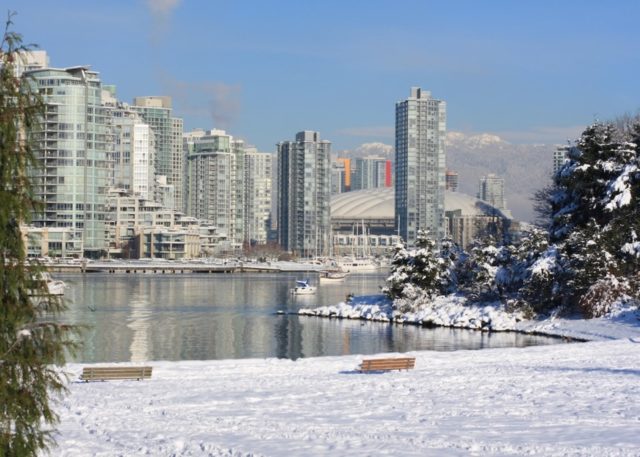The climate in Vancouver is temperate. Summers are quite dry, with an average temperature of 22°C, and a possible rise to 30°C. The rest of the year is rainy, but without extreme temperatures; even in winters, they rarely reach the below-zero zone. But you have to remember that this is not the south, and there is an ocean nearby that greatly affects the temperature indoors.
Heating does not always save people from freezing weather, so people tend to insulate their homes and focus on the windows, through which up to 40% of the heat can escape. And that is exactly what we will discuss in our article. Let us analyze which windows are the most favorable to install in Vancouver.
Choosing the right material for the frame
The window frame takes up enough space, so if you use the wrong material, a lot of heat will escape through it. Needless to say, it must be as airtight as possible, fit tightly to the sashes and most importantly, be made of material with low thermal conductivity. It can be metal, plastic (PVC) or wood treated with special compositions.
Metal plastic is made of plastic with steel fibers embedded inside, which increases the frame’s rigidity. Plastic protects the metal component from corrosion, makes the window look more attractive design-wise. The metal in this construction slightly increases the thermal conductivity, but adds strength. No need to tell you what plastic or wood is.
Thermal conductivity of the most popular materials in energy-efficient windows:
- Treated wood — 0.15—0.25 W/m °C.
- PVC — 0.25 W/m °C.
- Metal plastic — 0.3 W/m °C.
Other materials would not make a good frame for energy-efficient windows, since they have a high thermal conductivity.

The best window glass
For Vancouver, it is best to choose window glass with a special LOW-E coating, consisting of metal oxides. It reflects heat from space heaters in winter, leaving the heat inside the room and prevents hot air from entering the house in summer. This way, we can save money on electricity needed to run our air conditioners and heaters.
One major advantage of LOW-E coated window glass is that it allows just as much natural daylight to pass through as conventional surfaces. It should be noted that the use of such glass increases the total cost of the window by 10-15%.
Tinting coating
For existing windows with conventional glass, you can use tinting — a thin film with a darkening effect. It can hold back up to 90% of ultraviolet (sunlight) and up to 30% of infrared (heat) radiation. Among the key advantages are the relatively low price (comparing to spraying) and possible application to an already assembled structure.
Yet, there are also disadvantages compared to the very same LOW-E technology:
- Retention of natural light, which is not always convenient, especially if the window is on the shaded side.
- A short service life: if handled carelessly, it may be only a few years.
- In winter, the sun will not heat the room, so heating costs may increase.
Therefore, tinting windows is better if they are already installed in the room. You should be wary of ordering such work on double-glazed windows located in shaded areas, on the north side, with trees growing next to them, etc.
Energy efficiency rating always matters.
Windows can be divided into energy efficiency classes and are chosen according to the region of residence. The main indicator in this rating is the resistance to heat transmission. The higher the values (measured in m2K/W), the higher the energy efficiency. Classes:
- A — above 0.75.
- B — 0.65 — 0, 74.
- C — 0,55 — 0,64.
- D — 0,45 — 0,54.
- E — 0,35 — 0,44.
Windows with thermal transmittance values below 0.35 are not deemed energy efficient, and are not listed in the rating. You must keep in mind that each class has its own subclasses. For Vancouver, Class D, C, and B windows are considered optimal.
Ratings can also be made on other characteristics, including:
- The U-factor: it indicates the extent to which solar heat will be conducted – the lower, the better.
- The G-value: the lower the value, the less sunlight will penetrate into the room.
- Air loss: the higher the values, the poorer the airtightness and the more heat will escape to the outside.
Number of chambers and their content
The more panes and air gaps (chambers) between them, the higher the energy efficiency class of the window. However, you should consider that increasing the number of chambers increases the product cost, increases its width and weight and decreases the light penetration coefficient. For example, the energy efficiency value between a single-glazed window and a triple-glazed window can be up to 50%.
Inert gas, which is safe and odorless, can be used as a filler between the glass spaces. Although, it increases the window’s cost by several percent.
Consider the cost
When choosing any item, you should always respect the parity of opportunity. You should not cut corners to get a useless product in terms of functionality and overpay for something you will not use.
The same goes for the windows. The Vancouver climate is far from the tropical heat and arctic frosts, so you only need to choose a medium-energy efficient insulating glass unit of class C, for example. Do not purchase a window with 5 or 6 chambers filled with argon, but instead give preference to a two- or three-chambered glass units, and in the first case, you can use the gas filling.
Choose designs with energy-efficient glass. In extreme cases, you can use cheaper, but less effective tinting.
Please note that windows of different classes can be installed inside the same apartment, depending on the light sides, the level of shading, the effect of the ocean, etc.
If you take all factors into consideration, you can buy a quality energy-efficient window at the best price.



